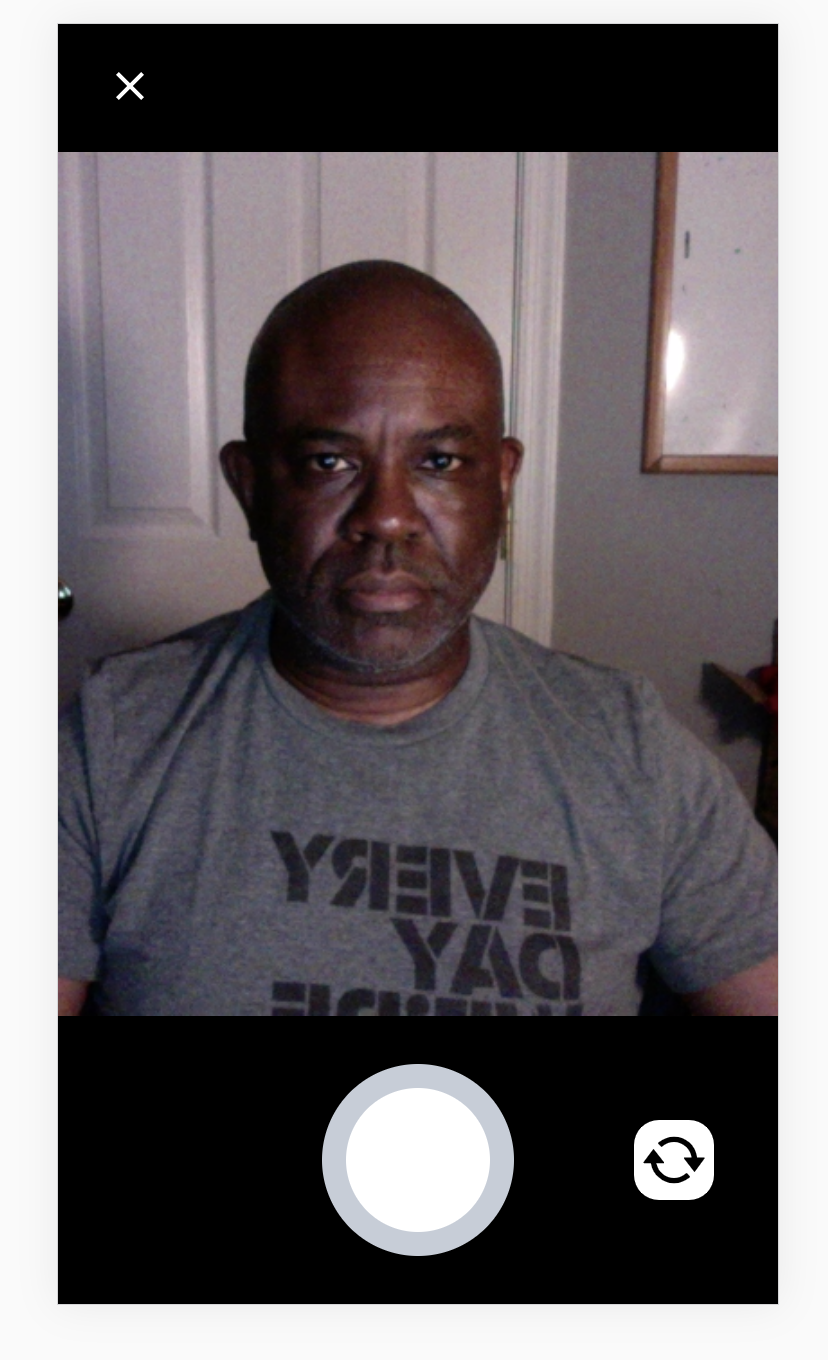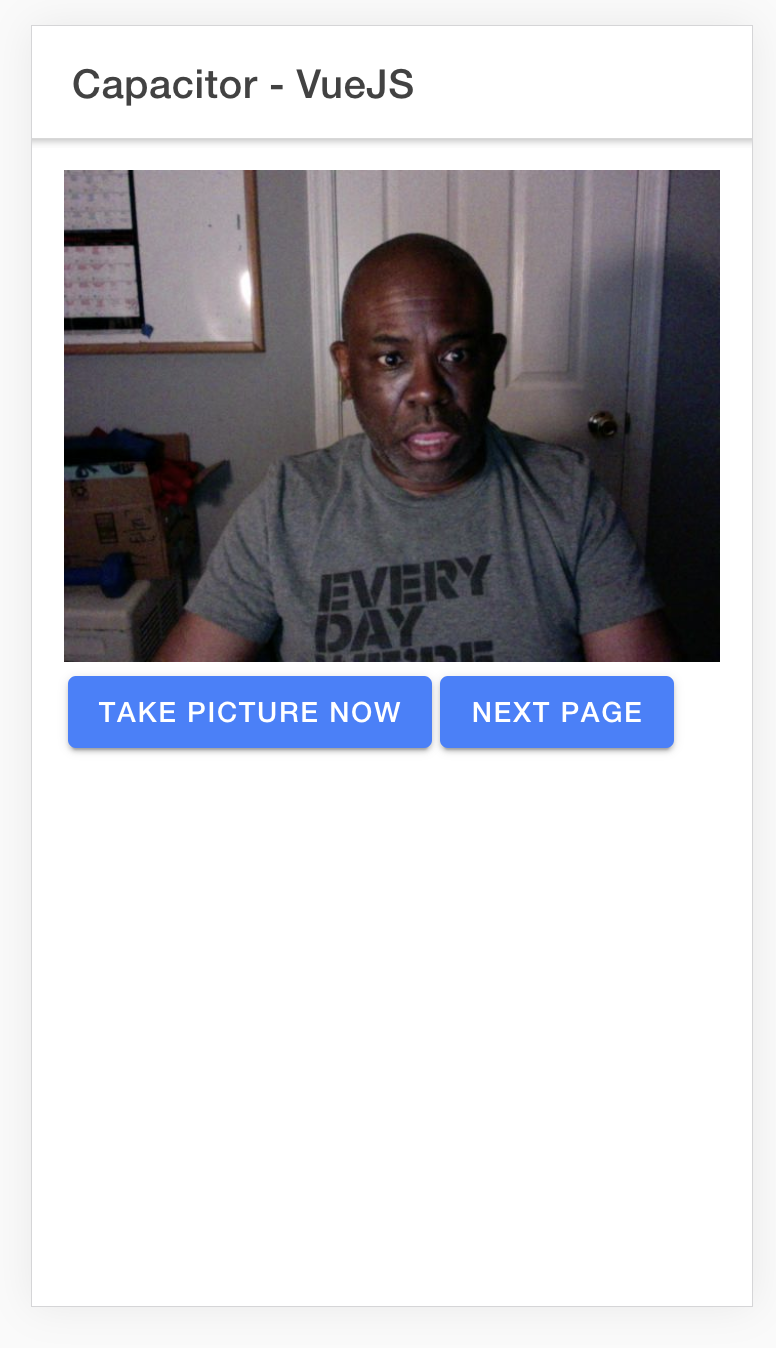updated 4/30/2020
Ionic:
Ionic CLI : 6.6.0 (/Users/aaronksaunders/.nvm/versions/node/v13.5.0/lib/node_modules/@ionic/cli)
Ionic Framework : @ionic/vue 0.0.9
Capacitor:
Capacitor CLI : 2.0.2
@capacitor/core : 2.0.2
Utility:
cordova-res (update available: 0.14.0) : 0.11.0
native-run : 1.0.0
System:
NodeJS : v13.5.0 (/Users/aaronksaunders/.nvm/versions/node/v13.5.0/bin/node)
npm : 6.14.1
OS : macOS Catalina
Click To View Ionic VueJS Video Playlist
---- https://github.com/aaronksaunders/ionic4-vue-tabs
- https://github.com/aaronksaunders/icon-vue
- https://github.com/aaronksaunders/ionic-vue-picker-sample
- https://github.com/aaronksaunders/vue-ionic-demo
- https://github.com/aaronksaunders/capacitor-vue-ionicv4-app
- Using VueJS for basic application
- Capacitor Geolocation Plugin
- Capacitor Camera Plugin
- Cordova Barcode Scanner Plugin
- Live Reload Is Enabled
Installed PWA Elements
npm install @ionic/pwa-elements
Then opened up the main.js file in my vue project and made the following changes
import { defineCustomElements } from '@ionic/pwa-elements/loader'; // <== NEW
Vue.config.productionTip = false;
Vue.use(Ionic);
new Vue({
router,
render: h => h(App)
}).$mount("#app");
defineCustomElements(window); // <== NEWand then the magic happened
npm run build
npx cap add <platform>
npx cap sync <platform>
npx cap open <platform>
I am testing with the Barcode Scanner Plugin, you will need to install the plugin using npm
npm install phonegap-plugin-barcodescanner
and then in the source code you get access to the plugin off of the window object
window.cordova.plugins.barcodeScanner.scan(
function(result) { /* success */ },
function(error) { /* error */ },
{ /* settings */ }
);For this project to work, I am running the vue application on local server and the ios project is loading the application from there.
To make live reload work, you need to configure your capacitor.config.json file, see documentation here on Ionic Website: https://capacitor.ionicframework.com/docs/basics/configuring-your-app/
Then you run your application as you would normally using the following command
npm run serve
In most situations, the application will be running on localhost:8080 so the settings below should work. What I usually do is utilize the actual IP address of my computer when running so that I can test on a real device that is on the same network.
When using Android, to get live reload to work, you might need to update your AndroidManifest.xml file; it can be found here: android/app/src/main/AndroidManifest.xml.
Then update the application tag to include usesCleartextTraffic
<application android:usesCleartextTraffic="true">This is what the capacitor.config.json file shoudl look like when attempting to develop using live-reload
{
"appId": "com.aks.vuehw",
"appName": "vuehw",
"bundledWebRuntime": false,
"webDir": "dist",
"server": {
"url": "http://localhost:8080", // THIS LINE IN capacitor.config is making it happen
"allowNavigation": [
"example.org",
"*.example.org",
"192.0.2.1",
"mapbox.com"
]
}
}
This requires you to run the vue server locally using the following command
npm run serve
And the start the ios project using the capacitor commands
npx cap sync; npx cap open ios
Just remove the whole server.url section from the capacitor.config.json file
{
"appId": "com.aks.vuehw",
"appName": "vuehw",
"bundledWebRuntime": false,
"webDir": "dist",
"server": {
"url": "http://localhost:8080", // REMOVE THIS LINE TO TURN OFF LIVE RELOAD
"allowNavigation": [
"example.org",
"*.example.org",
"192.0.2.1",
"mapbox.com"
]
}
}

